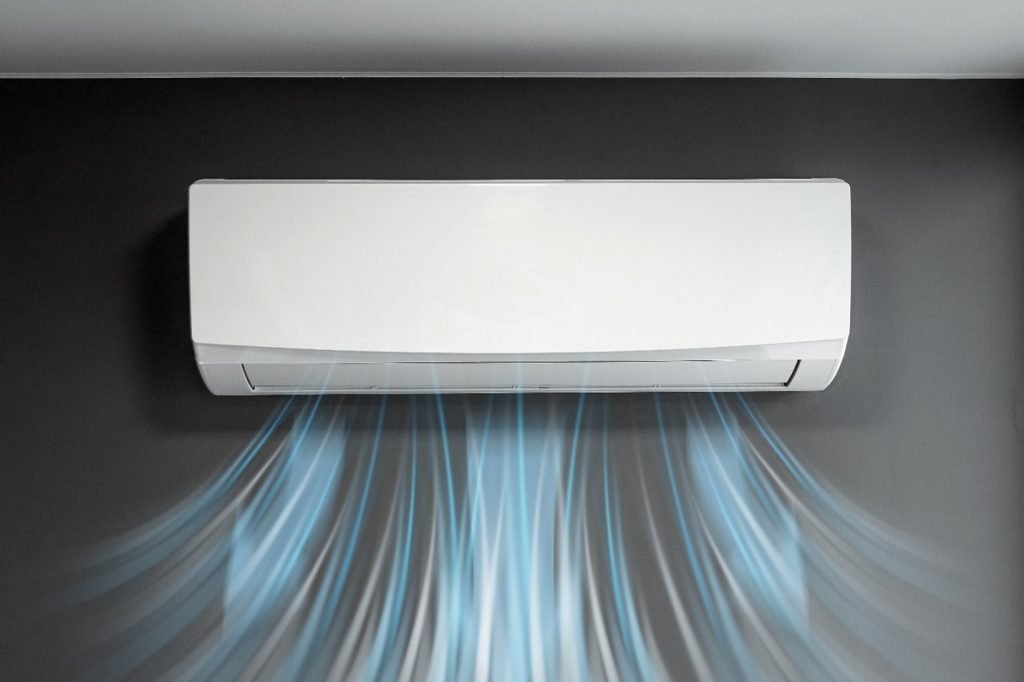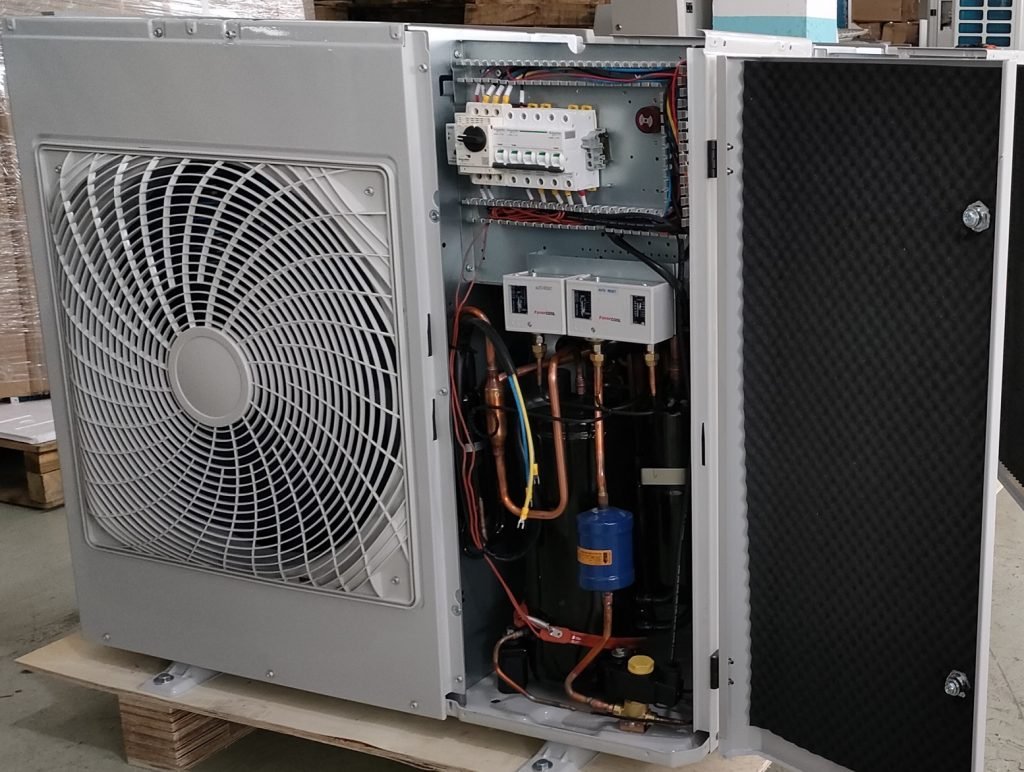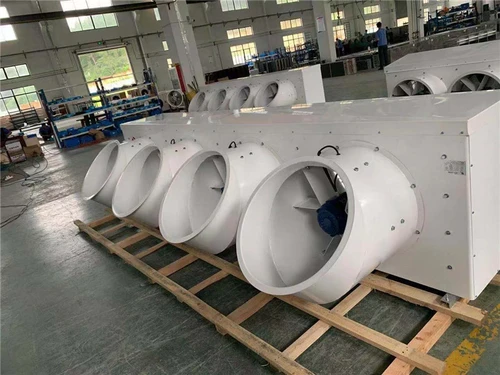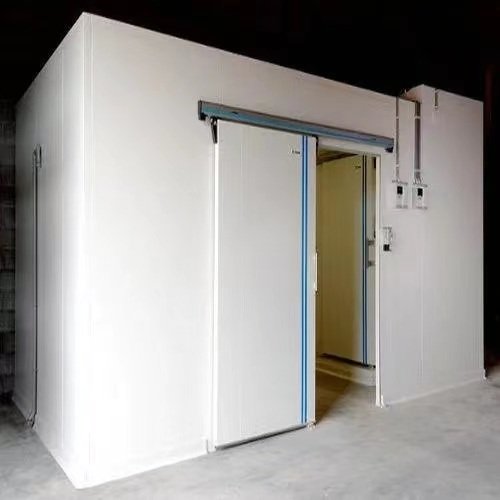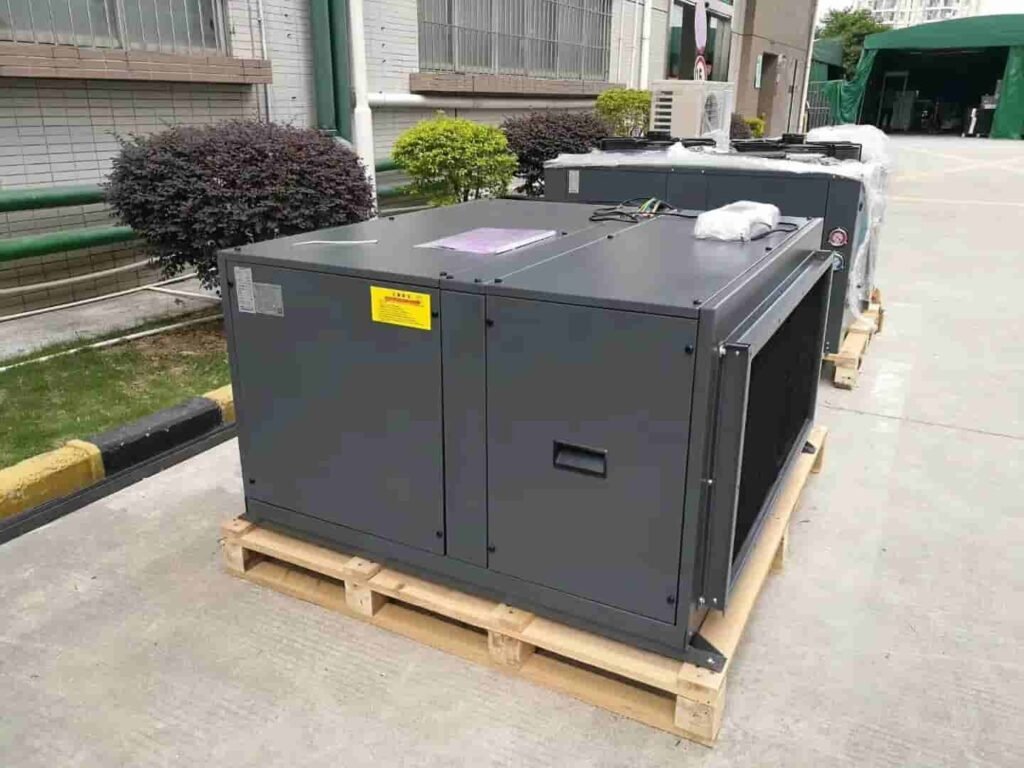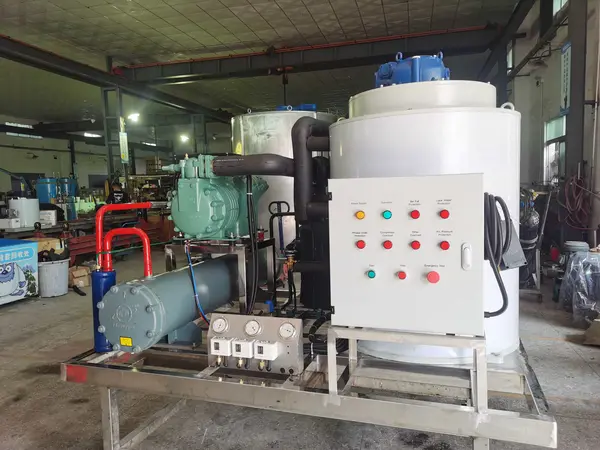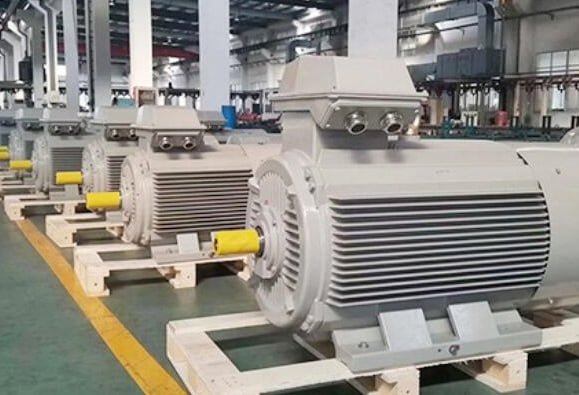Der Plattenwärmetauscher ist ein neuartiger Hochleistungswärmetauscher , das aus Serienblechen mit gewellter Form besteht. Während verschiedene Platten dünne rechteckige Kanäle aufweisen , und tauschen Wärme über die Platten aus.
Plattenwärmetauscher sind eine ideale Ausrüstung für den Flüssigkeits-Flüssigkeits- und Flüssigkeits-Dampf-Wärmeaustausch. Es hat die Funktionen wie: hohe Wärmeaustauscheffizienz, geringer Wärmeverlust, kompakte und leichte Struktur, geringer Platzbedarf, einfache Installation und Reinigung, Breite Anwendung, und lange Lebensdauer, usw.
Heute werden wir über mehr Wissen über Plattenwärmetauscher sprechen.
Struktur
Hauptbestandteile: Dichtung abdichten, Platte fixieren, aktive Platte, schrauben, obere Spalte, untere Spalte, Stützstange , Rahmenplatte, usw.
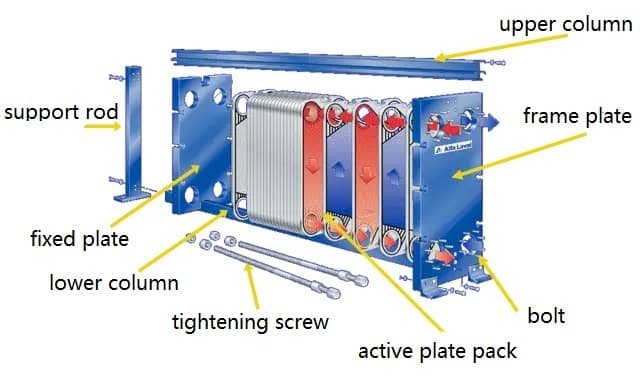
Plattenwärmetauscher hat 2 Typen: Rahmentyp (abnehmbar) und Lötart, gibt es mittlerweile 2 Arten von Platten: Wellblech und rundes Blech.
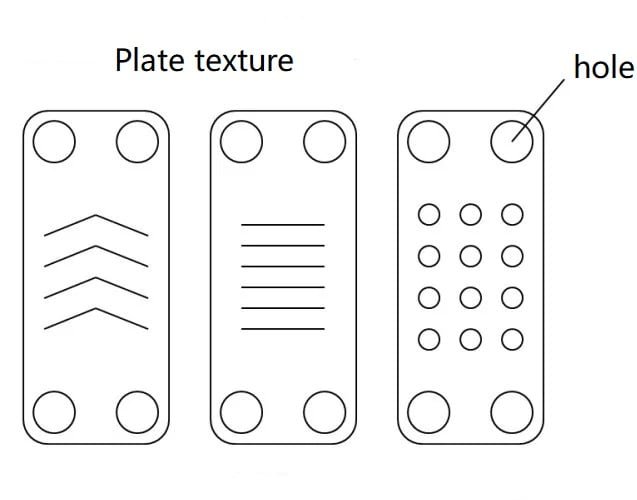
Funktionen der Plattentextur
Es kommt zu Flüssigkeitsturbulenzen, Verbessert die Wärmeübertragung, und die Wellen der benachbarten Platten bilden Kontaktwiderstandspunkte, Druckwiderstand verbessern.
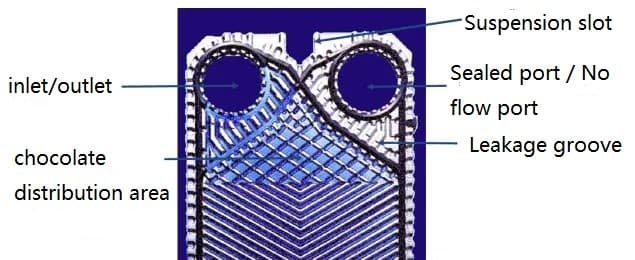
Schokoladenverteilungsbereich
Machen Sie den Flüssigkeitsfluss gleichmäßig über die gesamte Platte, mit dem gleichen Druckabfall bei „A“ Und „B“, Minimieren Sie den Druckverlust, Erhöhen Sie die effektive Wärmeübertragung, und einen parallele Fluss erlauben.
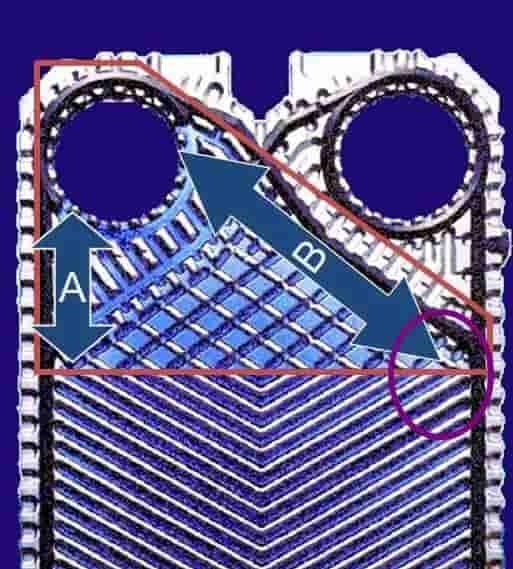
Der Plattenwärmeaustauscher besteht aus einer Gruppe von Platten, die in ein kanalförmiges Plattenpaket gestapelt sind. Die beiden Enden haben Bodenplatten mit Rohrverbindungen. Die gesamte Platte wird durch Vakuumlöckchen hergestellt.
Zwei Medienfluss in benachbarten Kanälen. Die Platten zwischen benachbarten Kanälen werden in die Wellblech gedrückt, um den Wärmeaustausch zwischen den beiden Medien zu verbessern. Im gefälschten Plattenwärmeaustauscher für Kühlung, Es gibt immer einen mehr Wasserflusskanal als Kältemittel Flusskanal.

Oben ist einseitiges Flussschema, Einige Wärmetauscher werden für den diagonalen Fluss gemacht, bedeutet „Q1“ Und „Q3“ ein Medium enthalten, während „Q2“ Und „Q4“ ein anderes Medium enthalten.
Der Befestigungsweg ist die Schrauben- und Schraubenstruktur, was für die Demontage und Reparatur vor Ort bequem ist.
Arbeitsprinzip
Die Platten des Plattenwärmeaustauschers werden versiegelt und durch Versiegelung der Dichtungen geführt, um die kalten/heißen Flüssigkeitskanäle zu trennen. Das kalte/heiße Wärmeaustauschmedium fließt durch ihre jeweiligen Kanäle und tausch.
Jede Platte hat Öffnungen an den vier Ecken, Dann bilden, Nachdem er in ein Plattenpack zusammengebaut wurde. Nach dem Wärmeaustausch des kalten/heißen Mediums, Es fließt aus den jeweiligen Sammlungsrohren zurück, dann recyceln Sie dann.
Einflutiger Aufbau: Nur zwei Platten tauschen keine Wärme aus – Front (Erste) und unten (zuletzt) Teller.
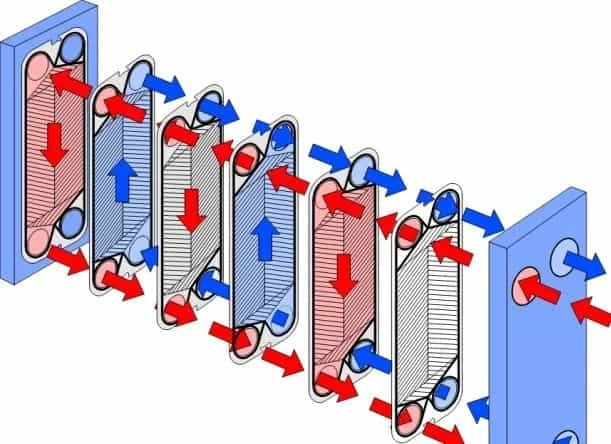
Doppelstromstruktur: Jeder Fluss hat 3 Platten ohne Wärmeaustausch.
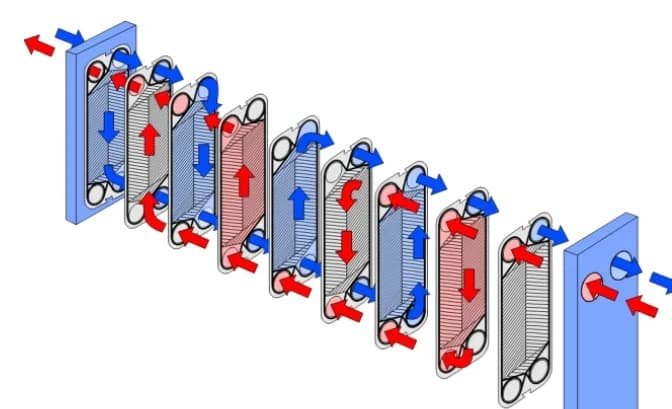
Plattenmaterial
| Plattenmaterial | Materialseriennummer | Geeignetes Medium |
|---|---|---|
| Edelstahl | 304, 316,316L | Sauberes Wasser, Flusswasser, Speiseöl, Mineralöl |
| Titan und Titanpalladium | Von, Ti-Pd | Meerwasser, Sole, Salzlösung |
| Nickel | In | Hohe Temperatur, hochkonzentrierte Natronlauge |
| Hastelloy | Hastelloy | Konzentrierte Schwefelsäure, Salzsäure, Phosphorsäure |
| Spezialstahl | SM0254, 20Cr, 18In | Schwefelsäure verdünnen, verdünnte wässrige Salzlösung, anorganische wässrige Lösung |
Dichtung
Dichtungen dienen als Dichtungselemente zwischen Wärmetauscherplatten, um Leckagen zu verhindern. In HVAC-Industrie, Dichtungen sind hauptsächlich Gummiprodukte, die stark von Temperatur und Medium beeinflusst werden.
Dichtungsanforderung:
Anti-Aging, reißfest, hohe Belastbarkeit
Die Versiegelung der Kontaktfläche ist genau in der Größe und das Alarmsignalloch ist empfindlich
Klebungsfreie Struktur, leicht zu zerlegen und zu versammeln
Dichtungsauswahl:
Nach den mittleren Merkmalen
| Dichtungsmaterial | Material Code -Nummer | Temperatur | Geeignetes Medium |
|---|---|---|---|
| Nitril Butadiene Gummi | NBR | -15 ~ +120 °C | Wasser, Meerwasser, Sole, Mineralöl |
| Nitril Butadiene Gummi + | Hnbr | -15 ~ +140 °C | Mineralöl mit hohem Temperatur, heißes Wasser |
| Ethylenpropylen -Dien -Monomer | EPDM | -25 ~ +150 °C | Hochtemperaturwasser, Säure, Alkali |
| Ethylenpropylen -Dien -Monomer + | Hepdm | -25 ~ +170 °C | Wasserdampf, Säure, Alkali |
HVACR -Industrieanwendung
– Distriktheizsystem
– Distriktkühlsystem
– Wärme- und Stromversorgungssystem
– Geothermiewasserheizungssystem
– Sofortiges häusliches heißes Wassersystem
– Swimmingpool konstanter Temperatursystem
– Sonnenwasserheizungssystem
– Klimaanlage System
– Kühlturm
– Grundwasserkühl-/Wärmequellensystem
– Wärmewiederherstellungssystem
– Eisspeichersystem
– Deckenkühlsystem
Installation
Verkehrteile Installation
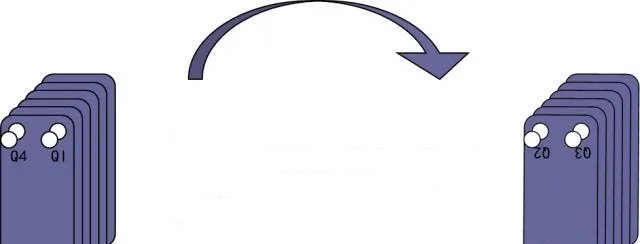
Einige Teller -Wärmetauscher können auf den Kopf stellen, Bitte bestätigen Sie mit dem Lieferanten.
Installationshaltung

Muss vertikal installieren, nicht horizontal.
Installation „1“ ist richtig, „2“ Und „3“ ist auch in Ordnung, „4“ ist falsch.
Pipeline -Layout
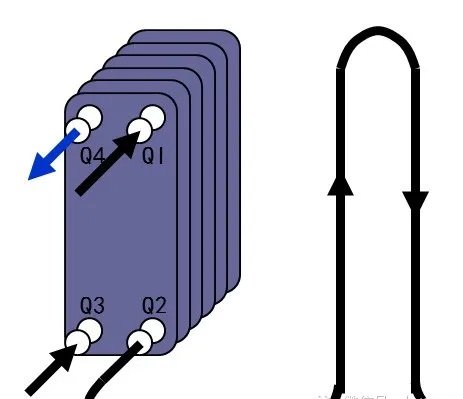
Lassen Sie keine Vibrations- und Rohrthermieausdehnung zum Erreichen des Plattenwärmeaustauschers erreichen.
Aktionen:
– Fügen Sie Kautschukdichtungen zwischen BPHE hinzu (Löckel -Platten -Wärmetauscher) und die Klammer.
– Verwenden Sie Vibrationsdämpfer für den Kompressor.
– Verwenden. Eine Rückbiegung höher als das Einlassrohr kann das Wasser die BPHE füllen lassen (Siehe oben Bild).
Pipeline -Schweißen
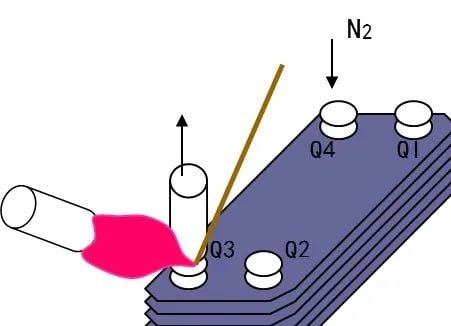
Reinigen Sie die Schweißoberfläche mit Lösungsmittel. Um Oxidation zu vermeiden und die BPHE abzukühlen, Stickstoff durch die geschweißten Rohre blasen. Halten Sie das Wasser in der Wasserseite fließen.
Halten Sie das Wasser fließen, bevor das Schweißen beginnt, und halten Sie es fließen, bis die BPHE von Hand berührt werden kann.
Das Löten sollte mindestens enthalten 45% Silber und das Löten sollten mit weniger als durchgeführt werden 650 ℃. In jedem Fall, Die Schweißzeit sollte nicht überschreiten 800 ℃.
Tig (Wolfram -Inertgasabbogenschweißung) ist die am wenigsten heftige Schweißmethode.
BPHE Leckage Checkliste
Systemprüfung
– Überprüfen Sie die Abschaltsequenz und Verdampfungstemperatur
– Überprüfen Sie, ob Vibrationen von anderen Geräten aus
– Ist ein elektrisches Ventil oder ein Magnetventil, das auf der Wasserseite aufgetragen wird?
– Enthält das Wasser überschüssige Chloridionen oder andere ätzende Mittel??
Externe Überprüfung
– Gibt es eine Ausbuchtung auf der Rückseite gegenüber dem Wassereinlass?
– Gibt es Anzeichen von Verformungen auf beiden Seiten?
– Sind die Rohrverbindungen eng?
– Überprüfen Sie das Erscheinungsbild für Schäden während des Transports oder der Installation?
Abschluss
Am Ende, Plattenwärmetauscher sind hocheffiziente und kompakte Lösungen für die Wärmeübertragung in verschiedenen Branchen.
Ihr modularer Aufbau, einfache Wartung, und ihre Anpassungsfähigkeit an unterschiedliche Anwendungen machen sie zu einer besseren Wahl für energiesparende Betriebe.
Um eine optimale Leistung und eine längere Lebensdauer zu gewährleisten, sind die richtige Auswahl und regelmäßige Wartung unerlässlich.
Irgendwelche Kommentare?
Begrüßen Sie jede Nachricht oder Neuveröffentlichung.



